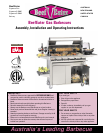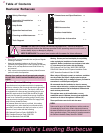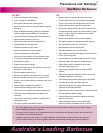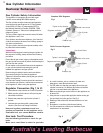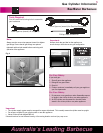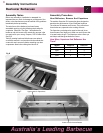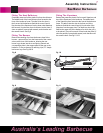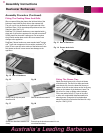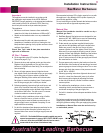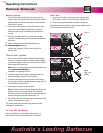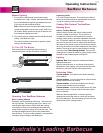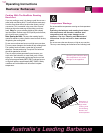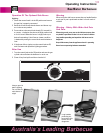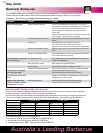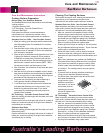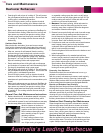Special offers from our partners!

Find Replacement BBQ Parts for 20,308 Models. Repair your BBQ today.
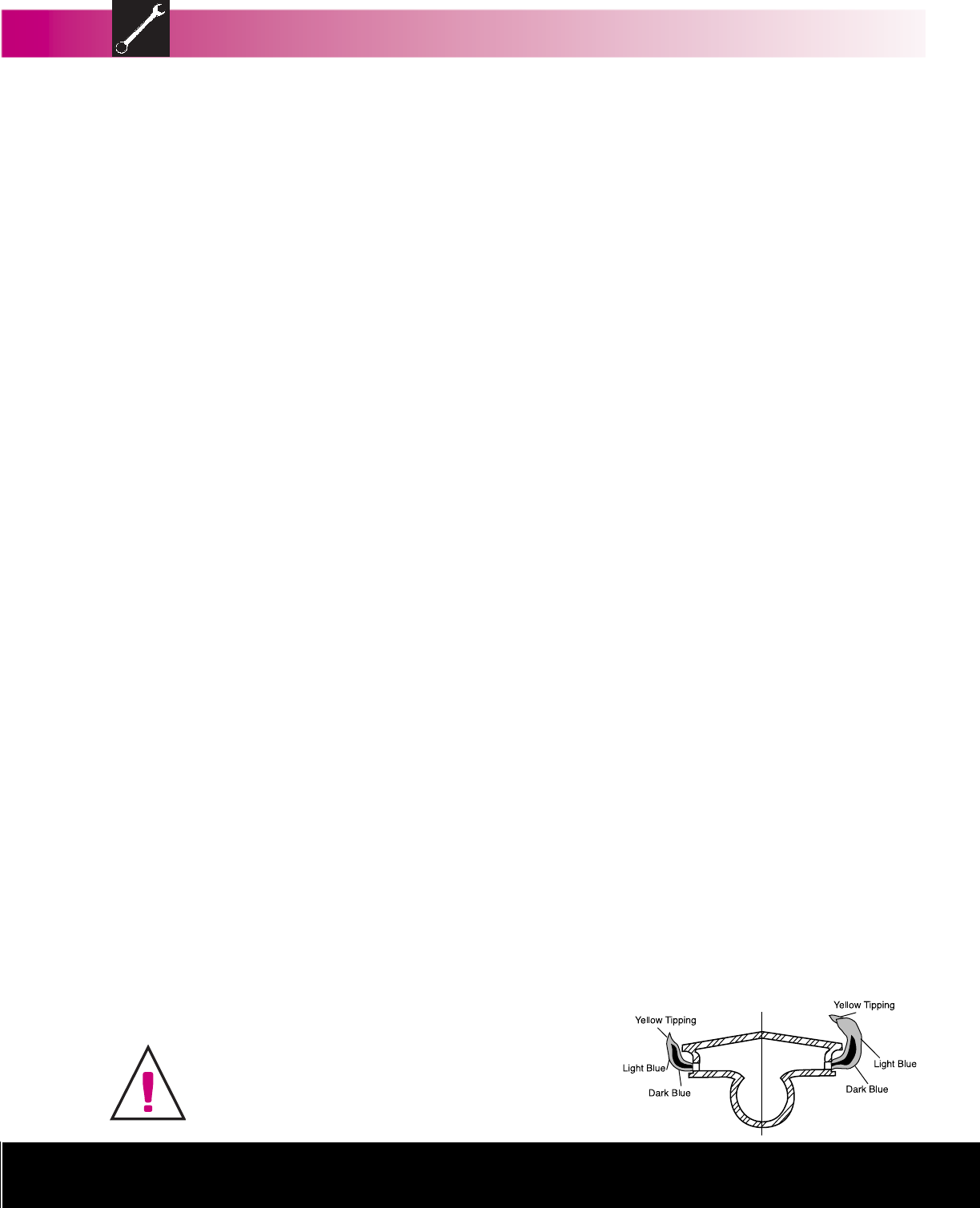
Australia’s Leading Barbecue
BeefEater Barbecues
9
Installation Instructions
Important
This appliance must be installed in accordance with
the installation requirements of the LOCAL GAS and
ELECTRICITY supply authority, or the appropriate installation
code issued by the A.G.A. and the A.L.P.G.A. Servicing
should only be carried out by an authorised person.
This appliance:
• Must have a minimum clearance from combustible
materials of all sides of the barbecue of 450 mm (18”).
• Should not be installed under or on any combustible
surface.
• Must be tested for safe and proper operation on
completion of installation and prior to leaving the site.
Keep ventilation opening of any cylinder enclosure clear
and free of any debris.
Check ‘Gas Type’ label & data plate attached to
right side of barbecue.
LP Gas / Propane
A. Fit the regulator to the LPG cylinder. See Regulator
Connection page 2, Fig 1.
B. Connect the hose and regulator to the gas inlet at the
Rigthand side of the barbecue. The gas inlet of the
barbecue is 3/8 SAE male flare fitting. Do not subject the
hose to twisting.
C. Secure all joints spanner (wrench) tight but do not
over-tighten. Check for leaks after turning on gas supply
by brushing onto all joints a solution of water and
detergent. Bubbling of the solution will indicate leaks.
Re-tighten or reseal any leaking joints. If leaks persist
turn off the gas supply and consult your dealer.
D. Following operating instructions light each burner and
check for a clear blue flame with just a tip of yellow.
Excess yellow tipping can be adjusted using the screw
on the side of the burner. Turn the screw in a counter
clockwise rotation to remove the yellow.
E. For mobile trolley installations, when using a flexible
hose to a fixed fuel source, a chain or similar
restraining device must be fitted to prevent strain on
the gas supply hose or accidental uncoupling. Do not
subject the hose to twisting.
F. For build-in situations allow adequate ventilation for the
barbecue and cylinder. Keep the cylinder away from
heat and allow clear access to the gas supply hose and
regulator.
Recommended minimum LPG cylinder capacity for use with
this appliance is 4kg. Maximum LPG cylinder capacity for
use with this appliance is 10kg.
Do not install the gas cylinder beneath the barbecue unless
in conjunction with an approved separator panel.
Natural Gas
(Natural Gas installation should be carried out by a
qualified gas fitter).
A. BeefEater Natural Gas barbecues are designed for low-
pressure (4.0” WC, 1.00KPa) to be used as freestanding
units, trolley mounted, or built into brickwork.
B. Fit the natural gas regulator supplied directly to the
gas inlet via hard plumbing and install a shutoff valve
within easy reach in the gas line. Secure all joints
spanner tight but do not over-tighten. Check for leaks
after turning on gas supply by brushing onto all joints a
solution of water and detergent. Bubbling of the solution
will indicate leaks. Re-tighten or reseal any leaking
joints. If leaks persist turn off the gas supply and consult
the manufacturer or dealer.
C. Test gas pressure by removing the last burner from the
left hand side of the barbecue and attaching a hose and
pressure gauge to the end of the gas valve. Turn on two
burners and check the pressure. Inlet pressure should
be 4.0” WC or 1.00 KPa.
D. Following operating instructions light each burner and
check for a clear blue flame with just a tip of yellow.
Avoid excess yellow tipping by adjusting the screw
on the side of the burner, counter-clockwise rotation
removes yellow.
E. For mobile trolley installations a chain or similar
restraining device must be fitted to prevent strain or
accidental uncoupling of the gas supply line.
F. For build-in situations allow adequate ventilation for the
barbecue.
The barbecue appliance must be isolated from the gas
supply piping system by closing its manual shutoff valve
during any pressure testing of the gas supply piping system.
Installation to Natural Gas must be carried out by
an authorised person.
WARNING: The flexible PVC hose assembly supplied must not be
exposed to temperatures in excess of 60°C (140°F). DO NOT expose
to the sun’s direct heat and DO NOT allow the hose to come in
contact with the hot surface of the barbecue body.
Right Wrong



